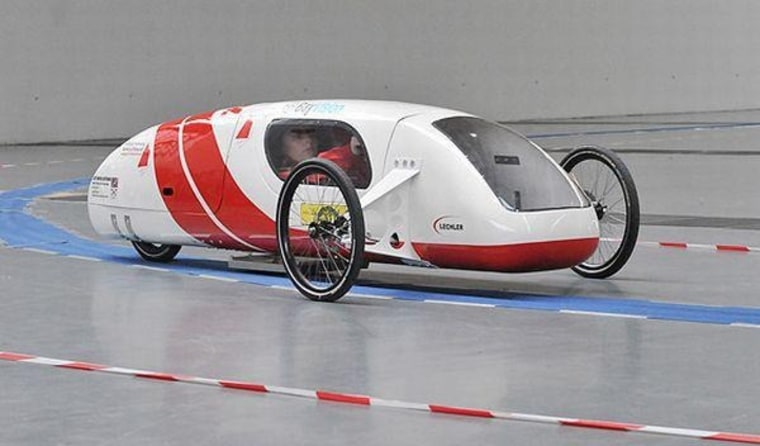Aw yeah. It had to happen somewhere, someday: a bubble on bike wheels that gets its power from conducting paths on the ground. The "E-Quickie" is one such vehicle.
A team of students at the Karlsruhe University of Applied Sciences in Germany led by mechanical engineering professor Jürgen Walter used lightweight, aerodynamic materials on the car, which weighs a mere 132 pounds (60 kilograms). Receivers on the vehicle's underbody pull in power from electric conducting strips that were laid on an indoor track, according to the university.
The vehicle has a modest 2 KW motor, but the design is so tight that the bubble car was able to zip around a 720-foot indoor track 40 times, topping out at a little over 31 miles per hour. Small batteries in the vehicle are only needed when the E-Quickie rolls away from the conducting tracks.
While the overall idea isn't exactly novel, the team thinks the setup could have industrial applications. Forklifts, for example, might be powered this way if they weren't so heavy. Wireless energy transmission could become a better way to power mobile phones, too, although I'm not going to shelve my charger quite yet. Clearly myriad safety details would need to be worked out first.
Next the team plans to keep testing and optimizing the E-Quickie, getting it as lightweight, efficient and fast as possible. In the meantime, I hope the vehicle lives up to its name. Quick-charging electric vehicles currently heading into production is still going to be a massive challenge. Perhaps one day roads will do more of the work.
